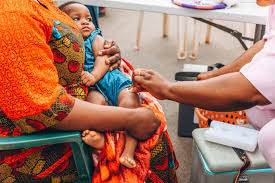By Henry Neondo
A new study has revealed that a popular Dolutegravir-based ART is associated with more weight gain, higher obesity and hypertension – especially in those with a higher pre-ART BMI compared to efavirenz-based regimens among people living with HIV and AIDS.
First approved for use in the United States a decade ago, HIV treatment dolutegravir (DTG) has reached more than 22 million people in 110 low- and middle-income countries including the East African countries of Tanzania, Kenya and others.
According to a latest study published in the December issue of AIDS, a Journal publishes high-quality papers reporting original scientific, clinical, epidemiological, and social research and conducted in multiple countries led by researchers based in Ifakara Health Institute, Tanzania, demonstrated that compared to efavirenz-based ART, individuals who took DTG gained weight within 1 8 months.
“This was more pronounced among men aged between 30-49 years of age with CD4 counts ≥500/ul,” the study led by Maja Weisser of Ifakara and conducted among Kilombero and Ulanga Antiretroviral Cohort (KIULARCO) reveals. Further, the study reveals that men of certain age bracket on DTG usage exhibited high incidents of hypertension.
According to the World Health Organization (WHO) estimates in 2022, 2.5 billion adults were overweight with 980 million being obese.
Normally, obesity is associated with cardiovascular and kidney diseases, cancer, metabolic and musculoskeletal disorders. However, numerous studies have shown that overweight and obesity are increasing also in people living with HIV (PLHIV), which is of concern, as it contributes to the already elevated long-term risk for cardiovascular complications in PLHIV compared to HIV-negative individuals and to poorer outcomes.
Conversely, in patients with advanced HIV, among whom undernutrition and opportunistic infections may lead to wasting, an initial increase in body weight corresponds to a beneficial ‘return to health’ effect.
According to the study, although the DTG-based regimens are superior in terms of virological efficacy and favorable safety profile compared to efavirenz, higher weight gain associated with dolutegravir-based regimens, as compared to other ART regimens, has been reported.
Similar large multicenter cohort studies as in Ifakara done in Kenya and Zimbabwe found higher weight gain in individuals starting on dolutegravir-based regimens. In the Zimbabwe study, individuals on DTG who gained weight was twice compared to the atazanavir and four times compared to the efavirenz group.
While the Tanzania study provides important evidence, that patients in rural settings starting a dolutegravir-based regimen gain more weight compared to those starting an efavirenz-based regimen, it falls short on calling upon the government to take policy decision on the DTG, recommended by the World Health Organisation (WHO) in 2018 as the preferred first- and second-line HIV treatment for all population groups.
According to WHO, DTG was described as more effective, easier to take, and has fewer side effects than other drugs.” It also has a high genetic barrier to developing drug resistance,” said WHO.
However, subsequent surveys reported levels of resistance to dolutegravir rising from 3.9% to 19.6% among people experienced with treatment and transitioned to a DTG-containing ART while having high HIV viral loads. To date, only a few countries have reported survey data to WHO.
What is worrying however is that despite doubts raised concerning DTG, especially on evidence of resistance in individuals with unsuppressed viral load, all that the WHO could say in early 2024 was for increased vigilance and intensified efforts to optimize the quality of HIV care delivery.
According to Dr Meg Doherty, Director, WHO Department of the Global HIV, Hepatitis and STI Programmes, standardized surveillance of HIV drug resistance is essential for effectively preventing, monitoring, and responding to these challenges.
END
Africa Science News




